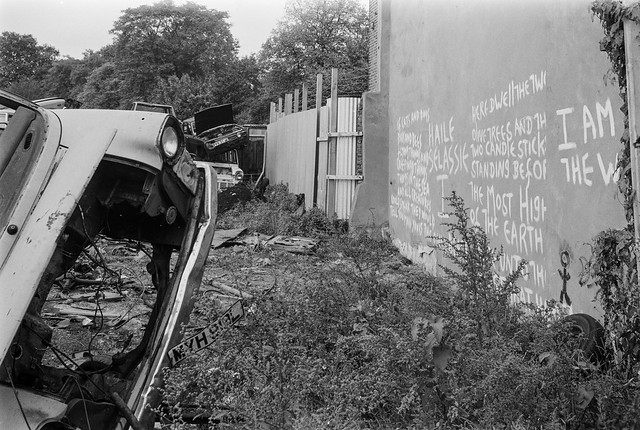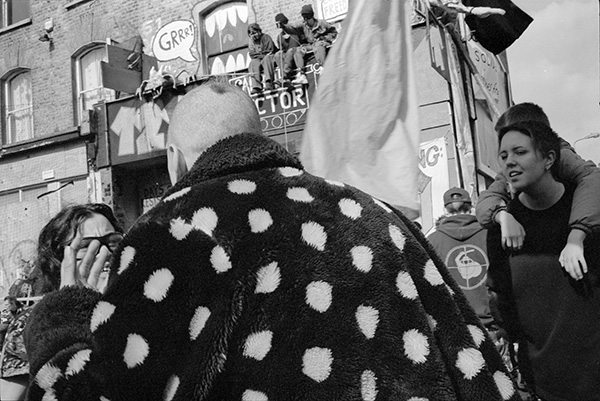I think I only took my first pictures on colour negative film in 1985. When I began in photography at the start of the 1970s it was quite clear that colour neg was just for amateur snaps and social photography, but real photographers – if they stooped to colour – did it on transparency film.
Most publications – books, magazines, newspapers etc – . still used only – or mainly – black and white, and when colour was used it was almost invariably from colour transparency. Images taken on colour neg were only used at a last resort, and usually then duped onto transparency for repro, or occasionally printed onto black and white paper to be used. You could get special panchromatic black and white paper which gave some chance of normal tonality, but it was a pain to use as normal darkroom safelights fogged it, and often normal black and white paper was used despite the often very poor tonality it gave.
Though colour transparency was great for repro, making prints from it had its limitations – as did using transparency film. I found myself too often having images with empty black shadow areas or unusably blown highlights as it the film had a limited exposure range. You could get great punchy saturated colour prints, fine for advertising (which was never my scene) but it was difficult to achieve subtlety. Fed up with telling printers what I wanted and being told it wasn’t possible I began making my own prints, working at times with complicated unsharp masking for Cibachromes. My German project I deliberately printed on outdated Agfa direct reversal paper.
In the 1980s, Fuji shook up colour negative (and, to a lesser extent transparency film), producing new film and print materials that gave greater fidelity, longer print life and greater flexibility in the darkroom. Seeing the prints that other photographers were making (and the fact I wasn’t actually selling my slides professionally) was a conversion experience. Since then I don’t think I’ve ever taken pictures on slide film.
At the same time I was beginning a major black and white project to photograph the fabric of London, and saw my colour work as separate to that, but dependent on it. I don’t think I ever went out to visit a place or area to take colour pictures, but simply did so when opportunities arose as I visited various areas.
I didn’t have a particular interest in cafes or hairdressers, but saw these and other shops and offices as example of small businesses with relatively low start-up costs which reflected both the aesthetic of their owners and of the people of the area which they served. Gee P Johnson’s unisex ‘The People’s Salon’ for me expressed that sense well.
Filing selected trade prints in albums according to their grid references was a way to explore the differences between different areas across London – and I chose to do so in these 1km wide south-north strips. It was also a kind of cataloguing system for my work, though not always as well documented on the prints it should have been.
These examples come from the first thirty or so images in my Flickr album TQ32 London Cross-section, which contains a little over 300 pictures. I’ll perhaps look again at some more shortly.
All photographs on this and my other sites, unless otherwise stated, are taken by and copyright of Peter Marshall, and are available for reproduction or can be bought as prints.


























































